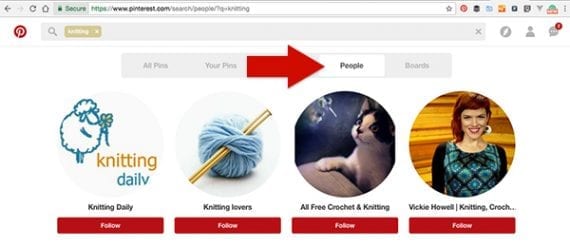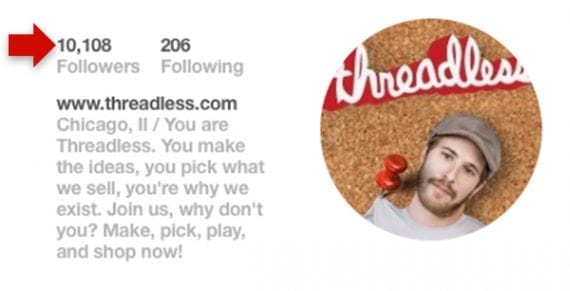Pinterest is a powerful social media channel for online retailers. It’s worth the time to build a good Pinterest profile, create active boards, and engage with some of the platform’s 150 million or so active users.
Pinterest’s potential for retail ecommerce is not new. Many marketers and service providers have been touting Pinterest’s stats for a least a few years.
For example, back in 2015 Shopify reported that Pinterest was the second most frequent source of traffic from social media sites to Shopify-based stores. What’s more, shoppers who did arrive from Pinterest were likely to spend about $50 more per order than folks who had arrived from other social media sites.
Here are seven tips to help you promote your retail ecommerce business on Pinterest.
1. Have a Good Business Profile
Pinterest offers special business accounts that allow you to create a business profile, describing your business to potential customers and providing a way for them to engage with your online store.

Lowe’s Pinterest profile is complete and full. It lets Pinterest users know the company and what it is about.
Your Pinterest business profile should include the following items.
- A logo or product image. If you have a recognizable logo, it is the obvious choice for your Pinterest profile image. It can also be a good idea to feature a product, perhaps one of your best sellers.
- Your business name. If your store’s name is not well known, you might add a descriptive phrase, for example: “Mike’s Place | We Sell Tools” or “Sally’s Boutique | Vintage Dresses.”
- Your store’s URL. Don’t forget to include your store’s URL. Pinterest will link to it.
- Business description. You also get about 160 characters to describe your business, Lowe’s offers a good example of what to include here.
- Link your Twitter account. It can be a good idea to link your Twitter account to your Pinterest account. Pinterest will include a Twitter icon, and potential shoppers will have another way to reach your company.
2. Pin From Multiple Sources
On Pinterest, you organize content into topical boards, which each house a stream of pins from your website, including products, blog posts, lookbooks, and similar.

Grooming supply retailer Bearded Bastard pins the products it sells. You should do the same thing, pinning most if not all of the products your online store carries.
Your website content and products, however, should not be the only thing you pin. Pin other images, articles, and videos that you find online. Repin items you find on Pinterest, too.
As a rule, aim to use repins for about half of what you post, content you find online can be about a 25 percent of your pins, and your own products and content will account for the final 25 percent of pins.

Bearded Bastard has many boards and pins images from many sources.
When you do repin something, make sure that it links to a safe page where the content reflects that image you’re sharing.
3. Spend Time Pinning
Marketing your ecommerce business on Pinterest will require an investment of time. This will be especially true when you first start pinning. As a rule, aim to post somewhere between 10 and 30 pins a day, at least five days a week, when you are starting out.
Spread the pins out on several boards. Use nine or 10 boards when you get started. The boards you make should reflect your brand. When possible, have boards on popular Pinterest topics.

Clothing retailer Madewell has more than 140 Pinterest boards. You won’t need that many, but it will take about nine or 10 to look active.
4. Develop a Pinterest Calendar
There is a sense in which Pinterest marketing is closely related to your store’s content marketing. In fact, Pinterest may be thought of as one possible channel for content.
With this in mind, schedule your pins on an editorial calendar. While you can still pin at any time, try to coordinate pins with product announcements, sales, or even when you publish a blog post.
5. Store Future Pins on a Secret Board
There are a few tools that allow you to schedule pins in advance. If you use one of these tools, simply add a pin to the queue, so to speak, whenever you find something cool.
For a free alternative, use a secret pin board to store pins you want to post later.

A secret pin board gives you a place to store pins, if you will, until you’re ready to share them on one of your public boards.
6. Write Good Pin Descriptions
Anytime you pin your own content, write a good, timeless, and informative pin description that gives your Pinterest audience context.
While it can be a good idea to include a call to action of some kind, avoid promotional copy, since your pin will outlast your sale.
If you’re having trouble, imagine that you are writing a product description for your pin or pretend you need to tweet about the post.

Clothing retailer Asos includes detailed descriptions whenever it posts its own content. In this example, the description offers fashion advice.
7. Follow Influencers and Ideal Prospects
Small retail ecommerce businesses may have trouble getting traction on Pinterest at first.
Large retailers have the benefit of a well-known and constantly-advertised brand, so they can treat Pinterest like a visual bookmarking service. But small businesses have to use it like a social media community, following folks in order to be followed or even noticed.

Use the “people” tab on Pinterest search results to find influential pinners to follow.
For your business, think about who your customer is. What sort of things will he or she be interested in discovering on Pinterest? Try searching for those topics, and following some of the most influential users who pin about them.
When Pinterest returns search results, it offers you the option to see the people behind the pins, so you can find who pins the things important to your shoppers.
You can also find individual, potential customers to follow. Try looking up one of your competitors on Pinterest. On that competitor’s profile page there will be a “Followers” link. Your competitor’s Pinterest followers are folks who have already raised their hands, if you will, and said they are interested in the products your competitor sells.
Click to each of these followers and find a board of theirs to follow.

Every business profile on Pinterest includes a link for the company’s followers. These followers have expressed an interest in the products the business sells.




